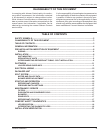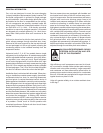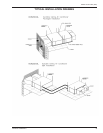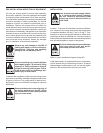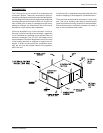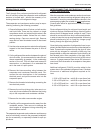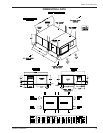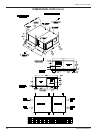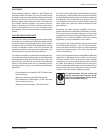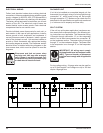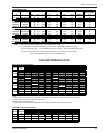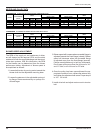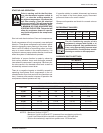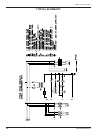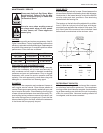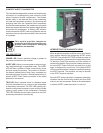
FORM 145.32-IOM1 (908)
11
JOHNSON CONTROLS
DUCTWORK
When installing ductwork, adhere to local Codes and
sensible practice. Minimize duct runs and avoid abrupt
changes in direction where possible. Allow ample access
space for servicing of the coils and changing of lters.
Perform regular maintenance on ducts to increase unit
life, maintain efcient operation, and reduce accumu-
lation of explosive dust. Refer to blower performance
charts, and engineer duct runs and accessory pres-
sure drop so as not to exceed maximum external static
values.
LOUVER SIZING GUIDELINES
One of the key issues in obtaining optimum performance
from indoor air-conditioners is the proper selection of the
condenser intake and discharge louvers. Unlike outdoor
air cooled units, which intake and discharge their cooling
virtually unrestricted, indoor units must overcome the
resistance of grilles or louvers at the outside wall - plus
the restriction of any interconnecting ductwork.
Our indoor air cooled air-conditioners are designed to ac-
commodate the external static pressure loss associated
with properly sized louvers of the “storm proof” type. This
type of louver typically has a free area approximately
40-45% of the actual louver size. To determine the free
area required for any given unit, adhere to the following
guidelines:
- Size condenser air intakes for 500-750 feet/minute
nominal velocity
(Maximum recommended 800 feet/minute)
- Size condenser air discharge for 1,200-1,500 feet/
minute nominal velocity
(Maximum recommended 1,700 feet/minute)
The use of louvers with higher velocities than above may
be employed, at the discretion of the engineer/installer,
provided that the total air pressure drop does not exceed
the capability of the condenser fan and motor. The use
of low restriction louvers with shallow blade angles can
allow higher face velocities without excessive static
pressure loss.
Exceeding the static pressure capability of the con-
denser fan will result in insufcient condenser air volume.
This will cause a loss in system capacity, and may cause
compressor shutdown during high ambient periods. (In-
stallation of an oversize condenser motor/drive, where
applicable, may be considered in such cases.)
(As a general rule, these velocities will require an intake
louver sized approximately 1.25 to 1.5 times the dimen-
sions of the duct connection on the unit, and a discharge
louver sized approximately 1.5 to 2 times the duct con-
nection dimensions.)
Use only louver sections that provide different deection
angles for air discharge and air intake, to ensure the
unit does not short circuit. Protect the unit from weather
conditions (rain, snow) entering through the condenser
air intake. All outdoor air ducts should pitch away from
the unit, toward the outside wall. Connect all ducts to unit
with canvas section duct connectors or choose another
suitable noise and vibration absorbing device.
The Manufacturer will not accept any
liability resulting from incorrect instal-
lation of this equipment. Follow instal-
lation instructions carefully.



